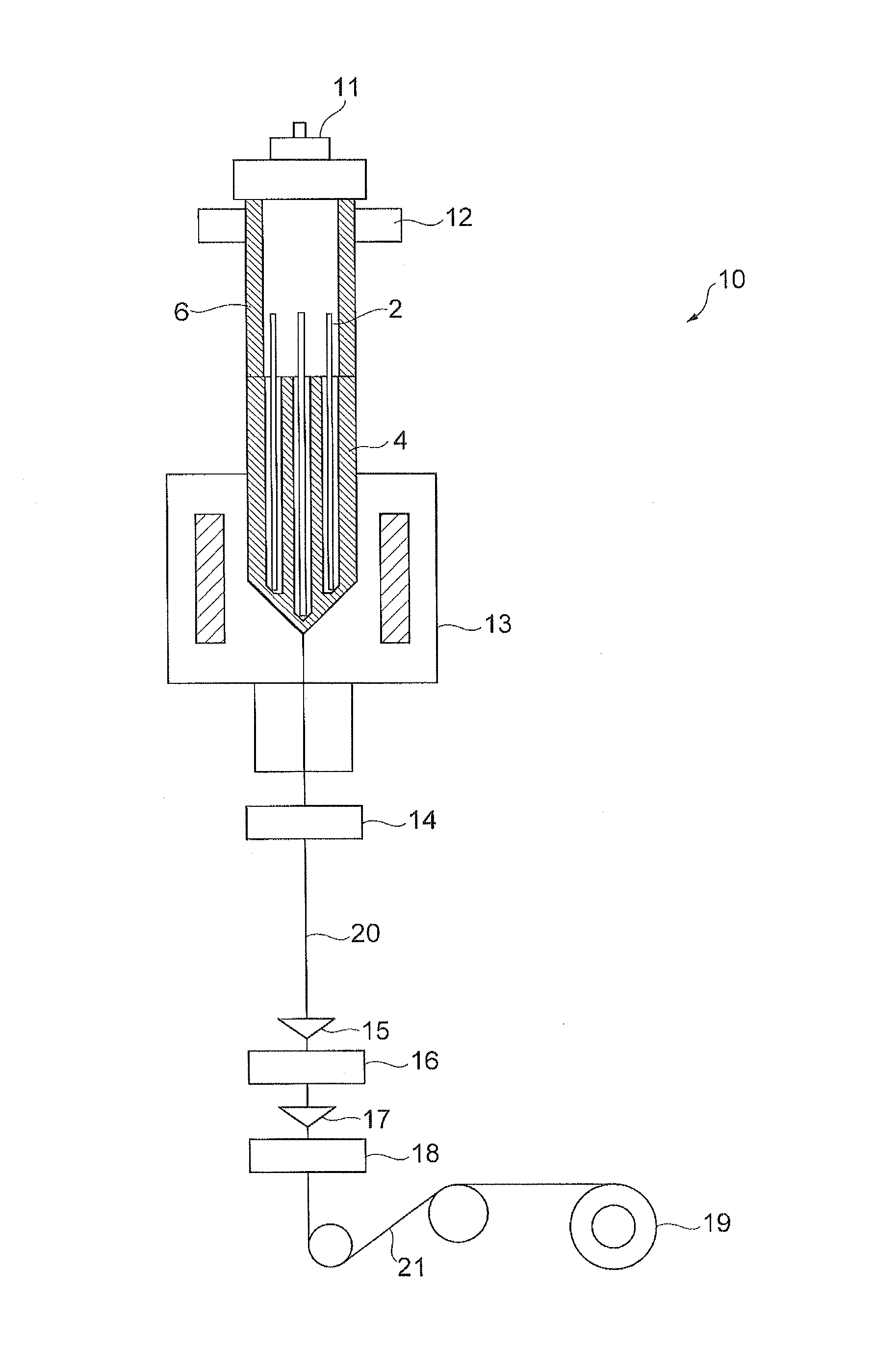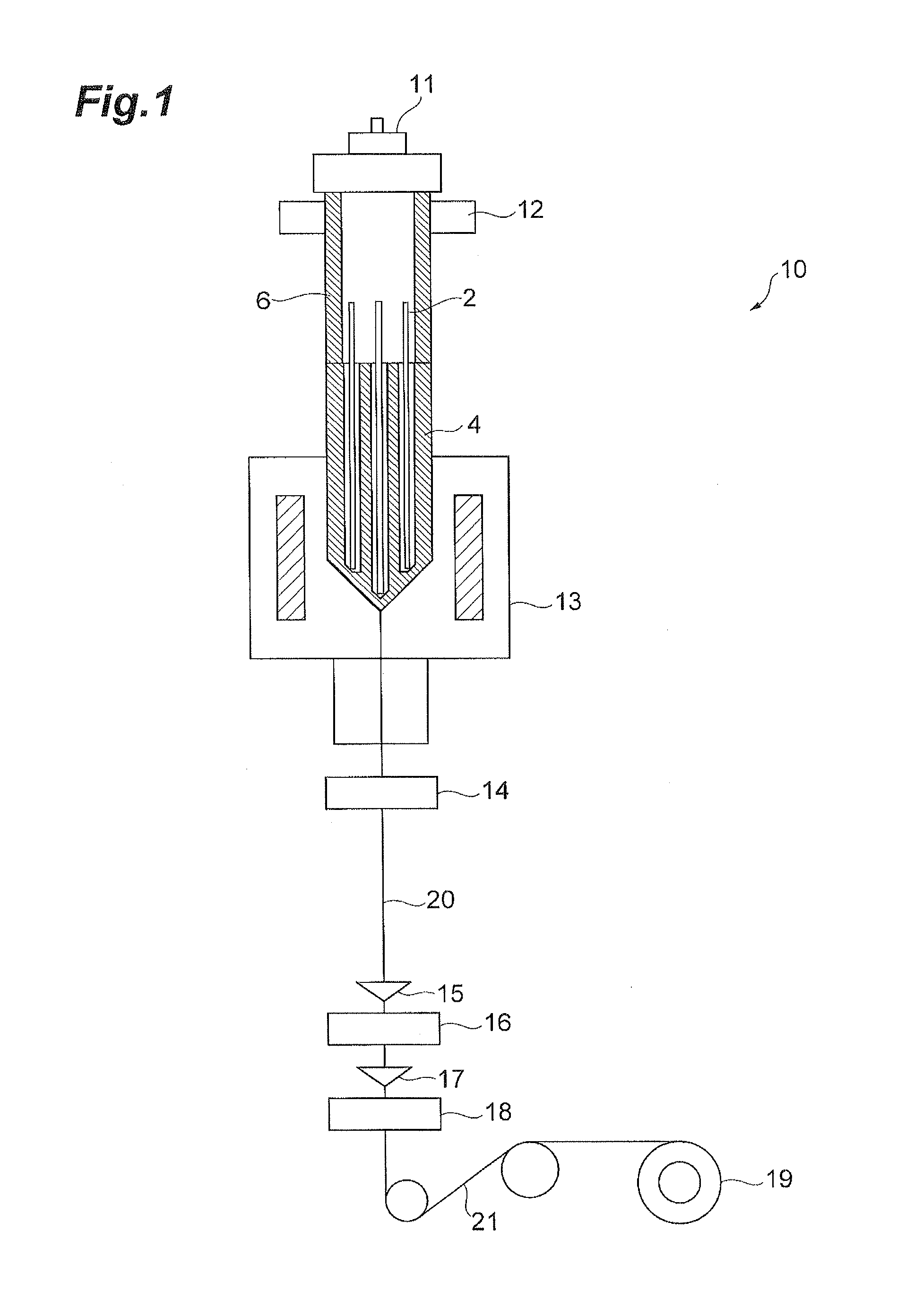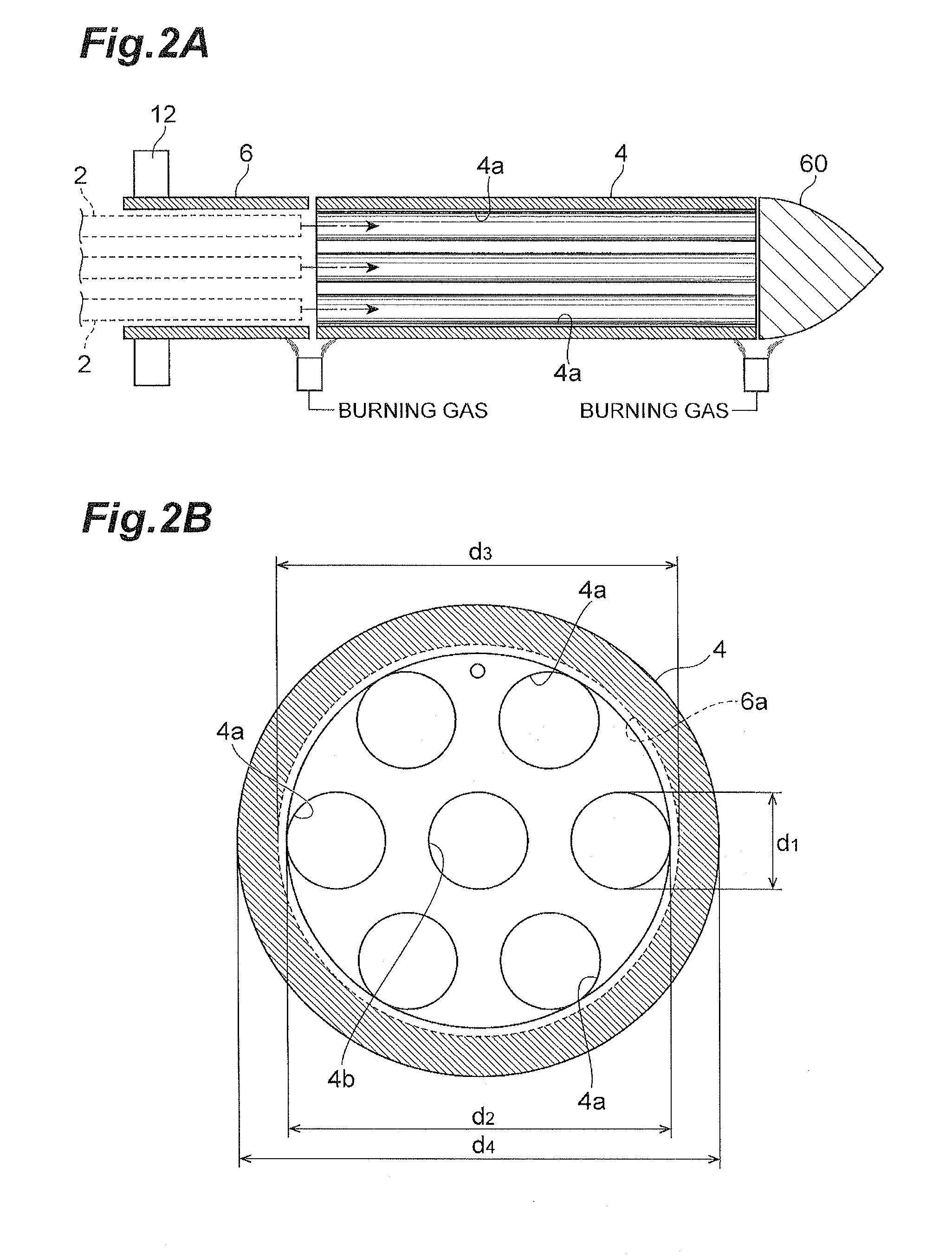Method for manufacturing multi-core optical fiber
a manufacturing method and multi-core technology, applied in the direction of manufacturing tools, material analysis using wave/particle radiation, instruments, etc., can solve the problems of inability to manufacture mcf by using the rid method, inability to achieve satisfactory core position accuracy, and inability to achieve mass productivity, etc., to achieve satisfactory economic efficiency and productivity, reduce the diameter of the dummy pipe, and reduce the effect of transmission loss
- Summary
- Abstract
- Description
- Claims
- Application Information
AI Technical Summary
Benefits of technology
Problems solved by technology
Method used
Image
Examples
Embodiment Construction
Description of Aspects of Embodiment of Invention
[0023]Aspects of the embodiment of the invention will be first described as enumerated below.
[0024](1) A method for manufacturing an MCF (multi-core optical fiber) according to a first aspect of the embodiment of the invention is a method comprising: a cladding material preparing step of preparing a cladding material comprised of silica-based glass and having an average concentration JOH of OH groups less than a predetermined concentration; a core rod producing step of producing a plurality of core rods comprised of silica-based glass and each having a core portion and a part of a cladding; a hole making step of making a plurality of holes in the cladding material so as to extend along an axial direction thereof; a splicing step of splicing a dummy pipe to a first end side of the cladding material; an inserting step subsequent to the splicing step, the inserting step being a step of inserting the plurality of core rods into the respec...
PUM
| Property | Measurement | Unit |
|---|---|---|
| diameter | aaaaa | aaaaa |
| diameter | aaaaa | aaaaa |
| roughness | aaaaa | aaaaa |
Abstract
Description
Claims
Application Information
 Login to View More
Login to View More - R&D
- Intellectual Property
- Life Sciences
- Materials
- Tech Scout
- Unparalleled Data Quality
- Higher Quality Content
- 60% Fewer Hallucinations
Browse by: Latest US Patents, China's latest patents, Technical Efficacy Thesaurus, Application Domain, Technology Topic, Popular Technical Reports.
© 2025 PatSnap. All rights reserved.Legal|Privacy policy|Modern Slavery Act Transparency Statement|Sitemap|About US| Contact US: help@patsnap.com



